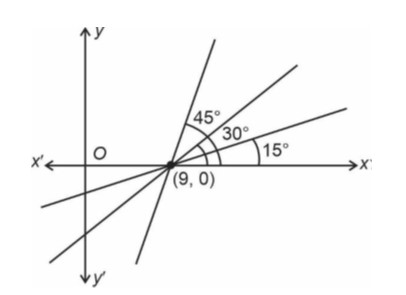30. The length L (in centimetre) of a copper rod is a linear function of its Celsius temperature C. In an experiment, if L = 124.942 when C = 20 and L= 125.134 when C = 110, express L in terms of C.
30. The length L (in centimetre) of a copper rod is a linear function of its Celsius temperature C. In an experiment, if L = 124.942 when C = 20 and L= 125.134 when C = 110, express L in terms of C.
-
1 Answer
-
30.
Assuming L along y-axis and C along x-axis, we have two points (124.942, 20) and (125.134, 110) in xy-plane. By two-point form, the point L and C satisfies the equation.
y-124.942= (x-20)
y-124.942= (x - 20)
y-124.942= (x - 20)
15y – 1874.13=0.032x -0.64
15y= 0.032x +1873.49
y = 0.0021x+124.8993
L = 0.0021C + 124.8993
Similar Questions for you
Eqn : y – 0 = tan45° (x – 9) Þ y = (x – 9)
Option (B) is correct
|r1 – r2| < c1c2 < r1 + r2
->
Now,
(y – 2) = m (x – 8)
⇒ x-intercept
⇒
⇒ y-intercept
⇒ (–8m + 2)
⇒ OA + OB =
->
->
->
->Minimum = 18
Kindly consider the following figure
According to question,
Equation of required line is
Obviously B (2, 2) satisfying condition (i)
Taking an Exam? Selecting a College?
Get authentic answers from experts, students and alumni that you won't find anywhere else
Sign Up on ShikshaOn Shiksha, get access to
- 65k Colleges
- 1.2k Exams
- 679k Reviews
- 1800k Answers

